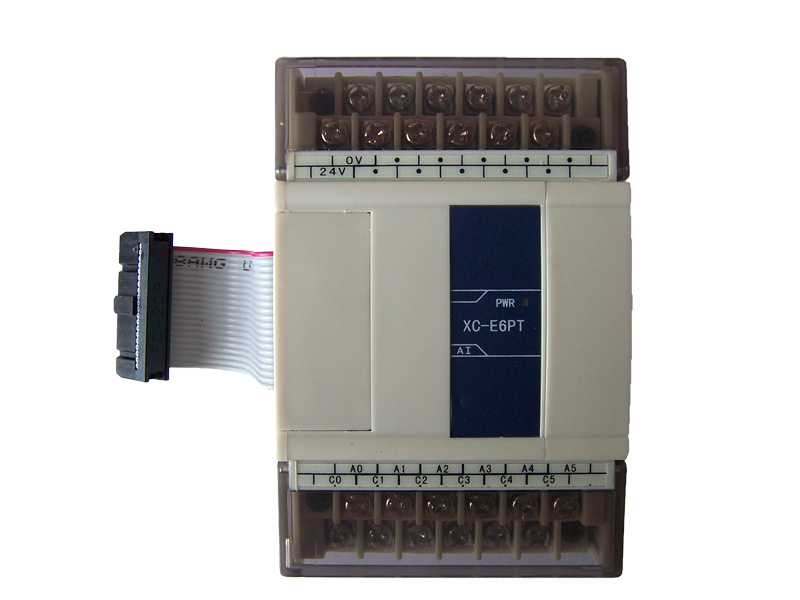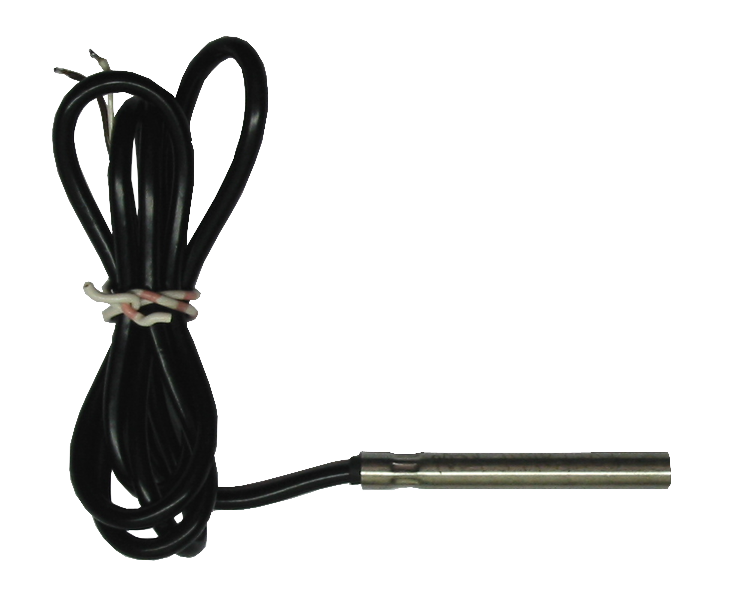Functionality of PT100 sensors
A PT100 sensor is a temperature sensor that can be used to measure and process temperatures very easily. PT100 sensors do this by using the effect that metals change their resistance when the temperature changes. PT100 sensors use a platinum wire through which a current flows. The current is generated by a PT100 module to which the PT100 sensor is connected as a wire. The module continuously measures the resistance of the PT-100 sensor and provides the determined temperature as a measured value.
The measuring range of PT100 sensors varies depending on the device. A typical measuring range for a PT100 sensor is, for example, -100°C and +350°C. For higher temperatures, so-called thermocouples are used as an alternative.
PT100 sensors are ideal for use in a PLC. Many PLCs have extensions to which PT100 sensors can be directly connected. This means that external converters can be saved.
PT100 sensors in the Thinget PLC
The Thinget PLC has its own module for accommodating PT100 sensors. Up to 6 sensor elements can be connected in 2-wire design. This enables simple temperature measurement at the PLC. The two wires of the PT100 sensors are simply connected to the PT100 module for this purpose; cable lengths of 1-3 metres are typical. Up to 7 PT100 modules can be connected to one PLC.
The measuring range is between -100°C to +350°C, the resolution is 0.1°C, the measuring accuracy +/-0.8%. The temporal resolution of the measurement in the PLC is about 0.6 seconds, whereby PT100 sensors themselves need some time to adopt the temperature of their environment, depending on the ambient temperature.
The measured values are available in the PLC as a temperature value. In the PLC programme, they can be easily read out from the input values of the analogue expansion modules. These have the address range ID. The addressing follows the position of the extension module and the addressed channel. The hundreds digit is the module, starting at 100 for module 1, the last digit indicates the channel, starting at 0. ID200 is therefore channel 0 on extension module 2. ID200 can be easily integrated into any comparisons or commands in the PLC programme in which words are permitted. The values are simple 16-bit signed values and can be easily processed in the PLC.
The value range of the PT100 inputs in the PLC is between -1,000 and +3,500. The value -1,000 stands for -100°C, +3,500 for 350°C. The value for 22°C room temperature in the PLC in ID200 would therefore be +220.
Where to get PT100 modules and sensors?
You can get the PT100 modules for the Thinget PLC from our online shop for 149 euros plus VAT and shipping. The matching PLC is, for example, the Thinget XC3-32 for 139 euros plus VAT and shipping. A great address for suitable PT100 sensors is Sensorshop24. Here you can get simple PT100 cable sensors with 1 metre cable length in two-wire version for less than 10 euros.
So you can get a simple temperature measurement system with a PLC, a PT100 extension and 6 PT100 sensors for less than 340 euros.
Your spstiger
Image source: Wikimedia Commons




